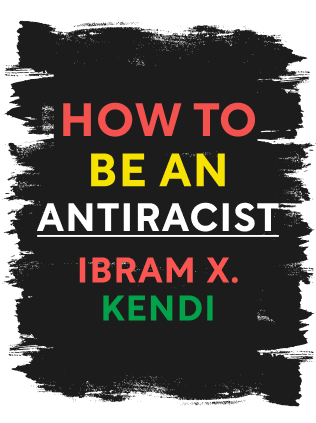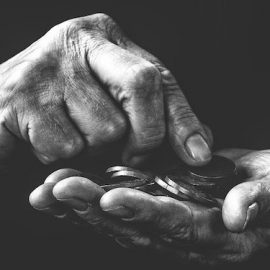

This article is an excerpt from the Shortform book guide to "How to Be an Antiracist" by tIbram X. Kendi. Shortform has the world's best summaries and analyses of books you should be reading.
Like this article? Sign up for a free trial here .
What is colorism and what are some colorism examples? How do racism and colorism interact?
For many people and cultures, light skin is considered better than dark skin. So, what is colorism? It is a type of skin-based discrimination and is related to racism because it builds on the perception that White people are better.
Read on for the answer to the question, “what is colorism?”
What Is Colorism?
“Light” and “Dark” refer to the varying skin colors of people of color. Light people have straighter hair and lighter skin, but they aren’t White. Dark people have bigger noses and lips, kinky hair, and darker skin. These two groups are made up of people from many nationalities, ethnicities, and races—membership is assigned based on physical appearance. So, what is colorism?
Colorism is a combination of racist policies and ideas that causes and maintains racial inequities between Light and Dark people, the main idea being the belief Light people are superior to Dark people. Sometimes Light people are lumped in with White people when needed to maintain a majority. Here are two colorism examples:
Example #1: In 2007, sports commentator Don Imus said that Tennesse’s Light basketball players were cute while Rutger’s Dark ones were “nappy-headed hos.”
Example #2: White female students are half as likely to be suspended as Dark ones, but White and Light female students have the same likelihood of suspension. This is a colorist perspective.
So, what is colorism and does it have merit? The truth is, there is no hierarchy of skin color. No color is better, worse, or more or less beautiful than any other.
Racism and Colorism: Historical Context
In 1680, Morgan Godwyn wrote that Black people think as well of themselves as Europeans think of themselves. Enlightenment intellectuals tried to change this—Johan Joachim Winckelmann wrote that African Americans need to get it into their heads that beauty is White.
What is colorism’s origin? In the US, it was popularized by Samual Stanhope Smith. In 1787, he spoke to the American Philosophical Society about color. He said that domestic servants who worked closer to White people became more attractive—Lighter—and the people who worked in the fields and were farthest away had strange bodies and hair.
Slaveholders agreed that there was a color hierarchy. They thought that the Lighter an enslaved person was, the better they were, and the more they paid for them. Light people often worked in the house, while Dark people worked outside in the fields because slaveholders thought that Light people were more skilled. The hierarchy was White, Light, Dark, and then Animal. (However, some enslavers thought that “mulattos”—mixed-race people—were worse than Dark people.) This was furthering the combination of racism and colorism.
After emancipation in 1865, colorism lived on. White communities tried to keep Black people, both Light and Dark, away from them, and Light people tried to keep Dark people away from them. For example, in the 19th century, “Blue Vein” societies came into existence. These societies excluded anyone whose skin was too dark to see the blue of their veins through it. Light was a privilege that people wanted to keep.
Dark people didn’t want to associate with Light people either. Three rules came into effect:
- One-drop rule—even the smallest percentage of Black heritage, a single drop of blood, makes you Black. White people have historically followed this rule to keep Light people out of their group.
- Two-drop rule—a little bit of White heritage makes you not as Black as Dark Black people. Black people have used this rule to keep Light people out of their group.
- Three-drop rule—a little bit more Black heritage means you’re Dark. Light people have used this rule to keep Dark people out of their group.
In 1920, W.E.B. Du Bois wrote that Black people had gotten past colorism. He changed his mind when he met a biracial man named Walter White. White had blue eyes and blond hair, was pro-assimilation, and allegedly believed than non-biracial Black people were inferior.
Getting Lighter—to the point where you could pass as White or Light—became an industry. Black men used hair gel called congolene to straighten their hair, which made it look more similar to Light people’s hair. Skin lightening products became popular in 1938.
For a brief period in the early 1970s during the Black Power movement, Dark people embraced their natural hair, but the quest for Lightness returned in the 1980s. Looking Light had advantages—for example, Light people had higher incomes than Dark people.
Post-Racial Beauty Ideal
The post-racial beauty ideal is Lightness. Lightness is racially ambiguous but includes things like lighter eye color, straighter hair, thinner noses, and medium buttocks and lips. These qualities are similar to the White beauty ideal, however, according to surveys, people think tanned skin, which looks like Light skin, is more attractive than Dark or pale skin.
Ibram’s Experiences
Ibram’s experiences include colorism examples. As an undergraduate at Florida A&M University (FAMU), Ibram faced his dueling consciousness when it came to his appearance. He wore cornrows, which embraced his Darkness. Cornrows made racists think he was a thug, but he didn’t care. He also wore light-colored contact lenses. At the time, he didn’t think the contacts were an attempt to be Whiter or Lighter—he wore them because he thought they made him cuter. He never reflected on why he thought lighter eyes were cuter.
Dating
The first woman Ibram dated at FAMU was Light. All of Ibram’s friends at FAMU preferred Light women and treated them differently from Dark women. Ibram felt uncomfortable about liking a Light woman—he was afraid he was conforming to the colorist beauty standard—so he broke up with her and planned to date only Dark women. Although he was trying not to be colorist, this promise to himself to only date Dark women was a form of colorism, too—he’d flipped the hierarchy, but he was still assigning superiority to one color over another.

———End of Preview———
Like what you just read? Read the rest of the world's best book summary and analysis of Ibram X. Kendi's "How to Be an Antiracist" at Shortform .
Here's what you'll find in our full How to Be an Antiracist summary :
- What racism is and how it evolved
- How you might have subtle racist thoughts and not even be aware of them
- Why being "not racist" isn't good enough






